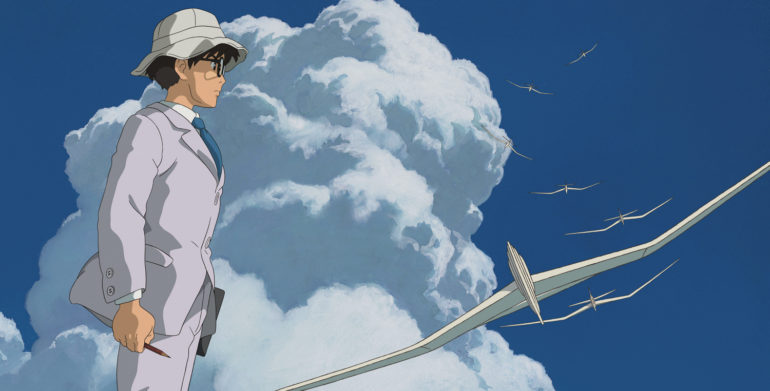Jiro Horikoshi always dreamt of being a pilot, but unfortunately his eyesight was of a very poor standard and as a result he had to settle for designing and building beautifully elegant aircraft. On the way to commencing a new job with Mitsubishi an earthquake strikes and in rescuing some people he meets his one true love. Their paths would not cross again for many years and in that time Jiro becomes one of the most respected aircraft designers in Japan. He works for the government, unperturbed by the fact that his designs are used to further the Japanese war effort; his only concerns are the progressiveness of his aircraft designs and his beautiful Naoko. The realisation of how important pushing the boundaries of aeronautical design can be on humanity may only be felt when it’s too late.
Following Jiro from childhood to adulthood and the realisation of everything he strived for is incredibly engaging. The dream sequences involving Italian aircraft designer Caproni never stop rolling in as he consistently drifts off to the design space in his head. His work ethic and attitude in many ways reflect the Japanese culture, but there is a very romantic position taken in regard to his design and building of the Japanese A6M Zero aircraft. Ultimately he grows to understand the value of human life through personal loss and this translates into the realisation that he is responsible for so much more than he has concerned himself with up until that point.
One of the strongest qualities of this piece is the stunning cinematography and the way in which it is animated; there is a sense that the open skies bare limitless possibilities in both aircraft design and where the hearts of young lovers can take them. The problem with limitless possibility is it may not always be possible to visualise the end game or the lack of control you ultimately have.
In addition to everything else is a wonderful score using Yumi Matsutoya’s 1973 Hik?ki-gumo as its theme, but also mixing in a fantastic piece, based on ‘das gibt’s nur einmal’ that repeatedly appears throughout and has a superbly uplifting sensibility.
Engrossing all the way to its heart-breaking conclusion, it’s fair to say that Miyazaki has crafted a beautiful film that doesn’t need factuality to make it brilliant.

